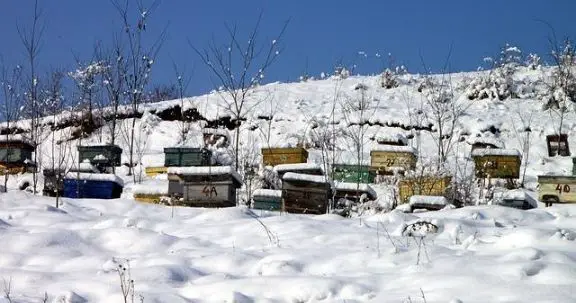One of the best things about having this blog is meeting fascinating beekeepers from all over the world. And each of these beekeepers has different philosophies and approaches to beekeeping. I thought I’d poll some of my far-flung friends and ask them each to share with me their best beekeeping tip for beginners–a tip they wished they had known when they started. Here’s what five of them said:

1) From Mark at Mark’s Bees: If you’re dealing with your bees, and you notice they are extremely testy (even with smoke), the best thing to do is close everything up and leave them alone. An old beekeeper once told me about the “three-day rule” which means that you leave the bees alone for three full days before you attempt to work with them again. By that time the bees should have cooled down and be easy to work with. If after three days you still find them testy, there may be another problem. Is the queen there? Is there something else (skunk, bear, ants, or some other varmint) that has upset them? Put your investigative skills to work and see what you come up with.
2) From Carrie at fleur-de-bee: Be ready for the June ‘wall’ (when beekeepers find themselves tired after such a busy spring season, and feelings of doubt, defeat, or plain old ‘I just don’t have the energy to care’ start to set in) and reconnect with your inspirations. Talking with other enjoyable beekeepers (not the grumpy poo-pooers – they won’t help you feel inspired!). Find a shaded spot to sit and drink something refreshing and watch the bees come and go. Marvel at what you’ve accomplished and learned so far. Take joy in the bees you notice on blossoms in your neighborhood – that they might be your very own honey bees contributing to the pollination of neighbors’ gardens, flowers, and trees.
3) From Chris at Beekeeping in Ontario: Read multiple books. No book recommends that you also read other books, but I found opinions and information to vary drastically between books. New beekeepers can definitely benefit by reading more than one book.
4) From Rita, a new beekeeper this year: Take a full year to fully explore this hobby before taking the plunge. Read everything you can get your hands on (“Confessions of a Bad Beekeeper” should be required reading IMHO), talk to bee people, join a local beekeepers group, join a beekeepers online forum.
5) From James at The Surreybeekeeper: Take some time to pop up to the hive on a lovely warm and bright evening, stand a safe distance away, with a glass of red wine and simply watch the hive. Not only is it lovely to do but you get to see the hive at its best and get to study the bees when they are going about their business. You can learn a lot by just watching them naturally rather than looking through the hive. By understanding them better you will be a better beekeeper (though the red wine is also nice!).
Beekeeping Hives Report
Because we’d been having near-freezing temps lately, the temperature of 60 degrees F was such a treat recently. We were out in the front yard garden pruning, weeding, and planning our spring garden. Of course, I had to check in on the bees and see how they were enjoying the weather…
Hive 2 was doing great. There was much activity around the entrance and I even spotted some pollen going into the hive which is a good indication there were babies inside. We knew that Hive 2 would make it through the winter as they had 5 frames of closed brood, still many drones, and lots of honey when we closed up the hive.
Hive 3 was a different story, though. When we did our last inspection before closing up the hive. there was a noticeable lack of brood–less than a frame’s worth. We tried to find the queen to reassure ourselves that she was there, but could not find her. Worried, I contacted our teacher, Serge Labeque, and he suggested that we set up their winter hive as a nuc box. Using follower boards (FB), the frame of brood (B), the frames of nectar/pollen (NP), and honey (H), we set it up in a deep hive box like this:
FB H NP B NP H FB
Of course, we had put a box of honey right above for the bees to feed on during the winter.
When we saw that Hive 3 had no activity, compared to Hive 2, during the warmer days before Christmas, we knew something was amiss. Last year, when Hive 1 died, we had denied it thinking they were clustered inside; they were just cold. I had no such illusions this year. When I took the picture above, the eerie silence of Hive 3 in the background, contrasted mightily with Hive 2.
Always live and learn, yes? How are your hives doing? Please let me know by leaving a comment below. Thanks.